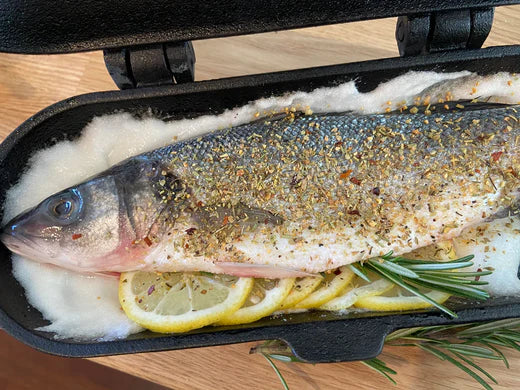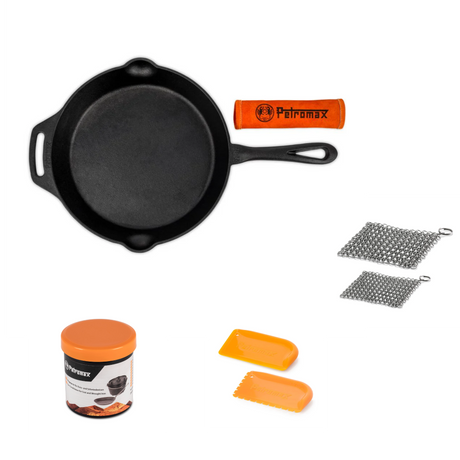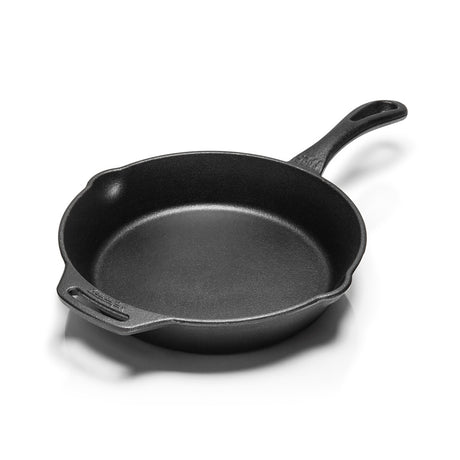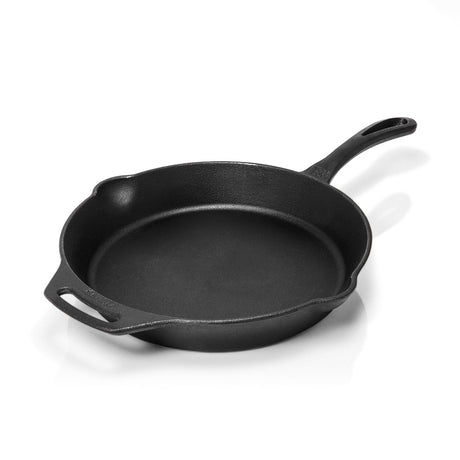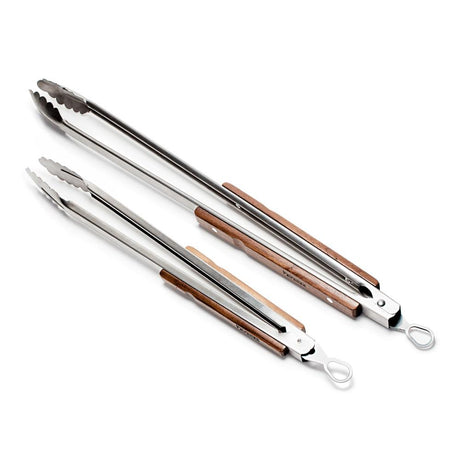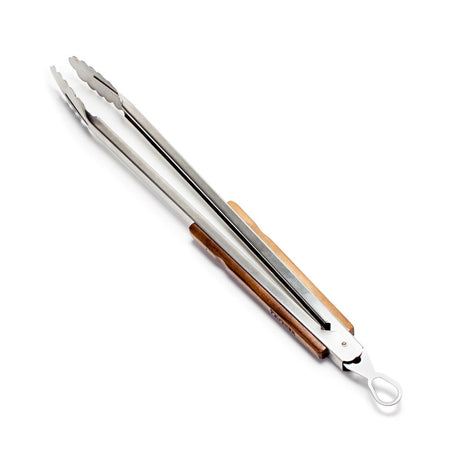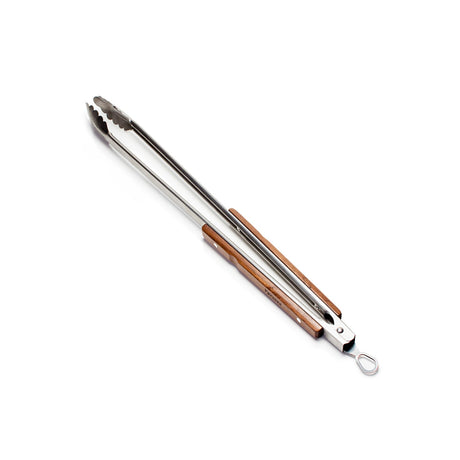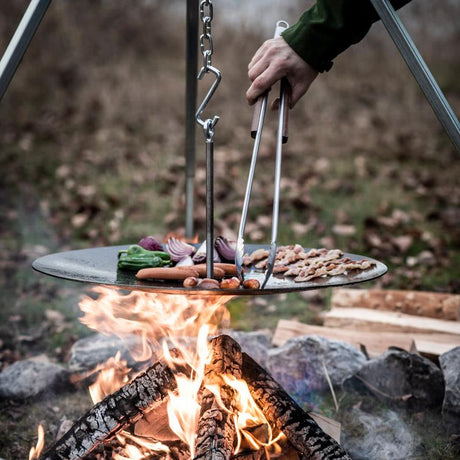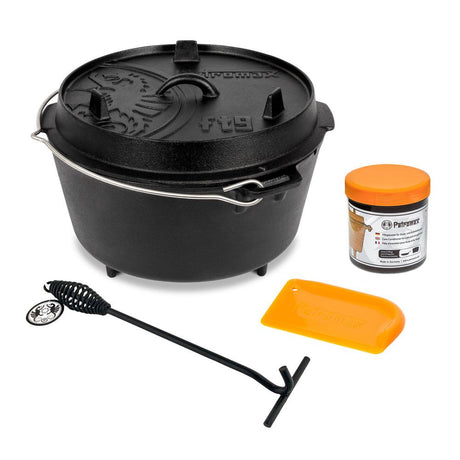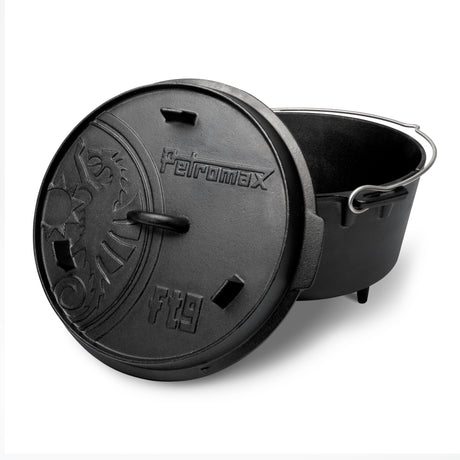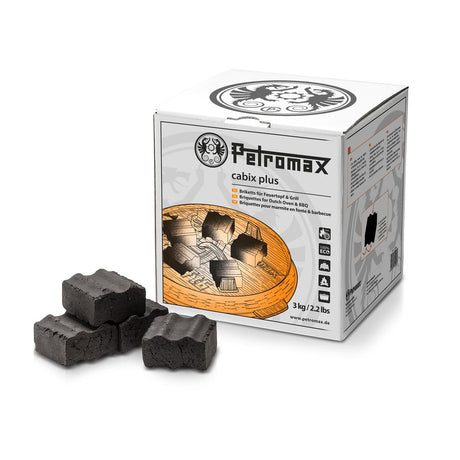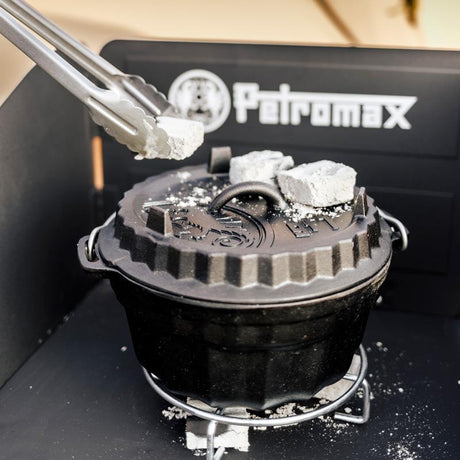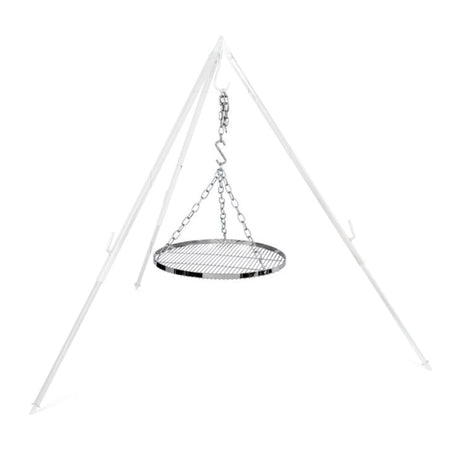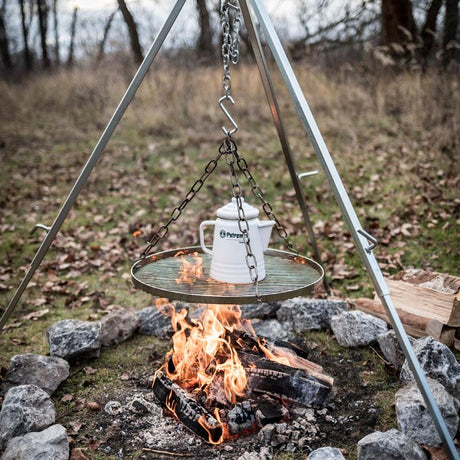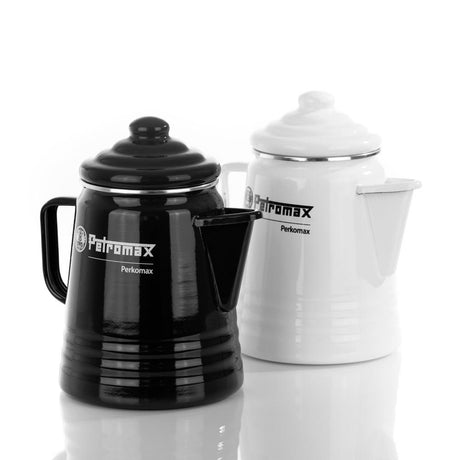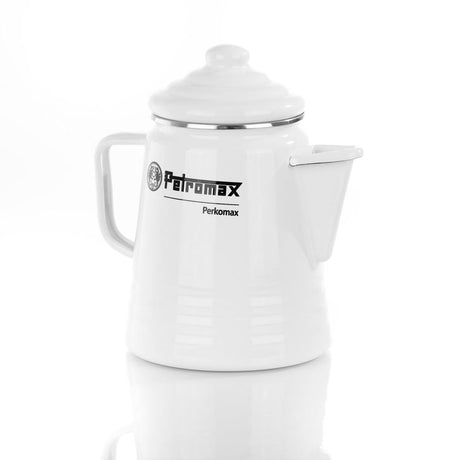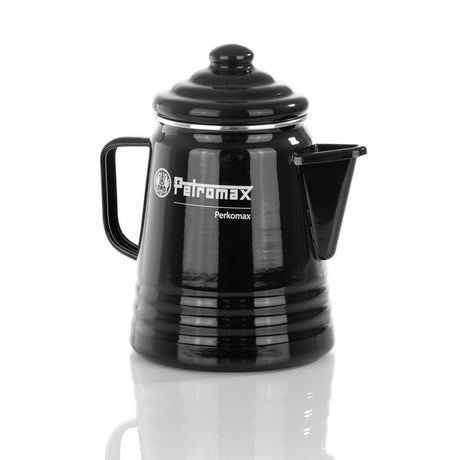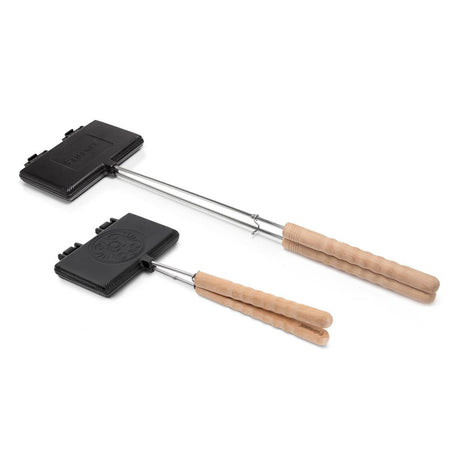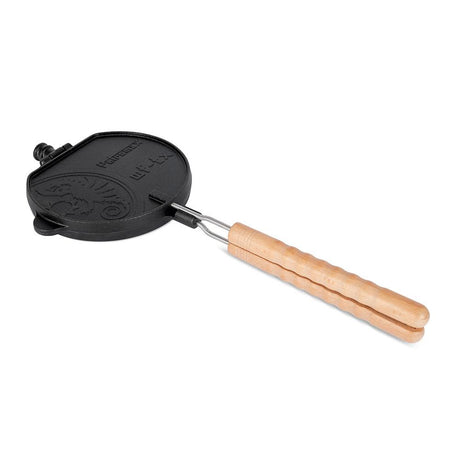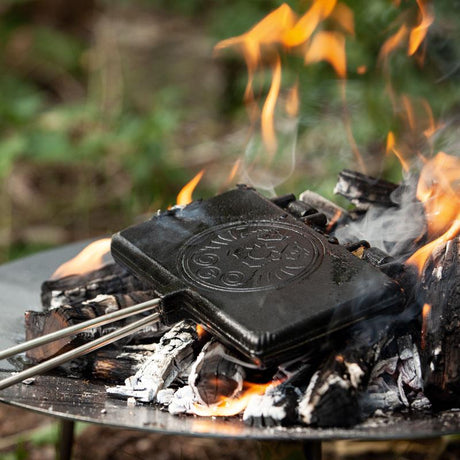
Grilling fish is an art that requires not only skill, but also the right knowledge. A perfectly grilled fish is juicy, tender and full of flavor - a real treat for the senses. In this blog post, we delve into the world of grilling fish and share the best tips and tricks for turning grilled fish into an unforgettable culinary experience.
Which fish is best for grilling?
Grilling fish on a gas barbecue
Grilling fish on a charcoal grill
Grilling fish in aluminum foil
How do I determine the right cooking point?
What to do with the fish bones
Grill fish: How to do it without sticking to the grill
- Dry fish thoroughly before grilling: moisture is one of the main reasons why fish sticks to the grill grate. Before you put the fish on the grill, dab it dry with kitchen paper. This helps to dry the surface of the fish and reduce sticking.
- Brush with vegetable oil (rapeseed, sunflower or olive) before grilling: A thin layer of vegetable oil applied to the surface of the fish can help prevent it from sticking to the grill grate. It is best to use a neutral oil such as rapeseed oil, sunflower oil or olive oil. Brush the fish lightly with oil before grilling to create a protective layer.
- Place the fish on a preheated grill rack: Make sure that the grill rack is already preheated before you place the fish on it. A hot grill rack helps to form a nice crust on the fish and prevents it from sticking to the rack.
- Move the fishback and forth on the grill frequently for the first 5 minutes: When you first place the fish on the hot grill rack, move it back and forth frequently for the first few minutes. This will prevent the fish from sticking to the grill. After a few minutes, a crust will form which will further reduce sticking.
- Alternatively: do not place directly on the grill, use a grill basket or grill plate: If you're still worried about the fish sticking to the grill grate, you can also use a grill basket or grill plate. These provide a flat, non-stick surface on which the fish can be grilled evenly without sticking to the grid.

Which fish is best for grilling?
When grilling fish, choosing the right fish is crucial for a successful result. Not every fish is equally suitable for the grill. Here you can find out which fish is best for grilling and how best to prepare it.
The easiest way to grill fish is with firm and fatty meat.
Fish with firm and fatty meat is ideal for the barbecue, as it doesn't fall apart easily when grilled and remains juicy. These fish include salmon, trout, herring and tuna. It is particularly advisable to place these fish on the grill with the skin side down. The skin protects the meat from direct heat and gives the fish additional flavor.
It is better not to grill lean fish directly.
Lean fish such as cod, carp, zander and plaice tend to dry out and fall apart easily when grilled directly. A better alternative is to process these fish in a Dutch oven. They can be cooked gently in a Dutch oven and remain nice and juicy.
To make it easier for you to choose the right fish and prepare it, here is a table with some popular types of fish, the recommended grilling method, the right spices, the grilling time and the core temperature:
Fish |
Grill method |
Seasoning |
Grilling time |
Core temperature |
Trout |
Fry whole |
Olive oil, salt, lemon |
approx. 10 mins per side |
65 degrees |
Salmon fillet |
Grill on the skin |
salt, pepper, herbs |
approx. 6-8 min |
54-60 degrees (depending on cooking level) |
Sea bream |
Grill whole |
Olive oil, herbs, lemon |
approx. 15-20 min |
60-65 degrees |
Tuna steak |
Grill directly |
Sea salt, pepper |
approx. 3 mins per side |
45-50 degrees (medium rare) |
Prawns |
Thread onto skewers |
olive oil, garlic, herbs |
approx. 2-3 mins per side |
70 degrees |
Zander fillet |
Grill in aluminum packet |
butter, white wine, dill |
approx. 10-12 min |
62 degrees |
Cod fillet |
Grill on the skin |
salt, pepper, lemon |
approx. 5-6 mins per side |
60 degrees |
Mackerel |
Grill whole |
Olive oil, salt, pepper |
approx. 10-12 mins per side |
65 degrees |
Turbot fillet |
Grill in an aluminum packet |
butter, white wine, capers |
approx. 8-10 mins |
62 degrees |
Salmon trout |
Fry whole |
Olive oil, dill, lemon |
approx. 8-10 mins per side |
65 degrees |
Redfish fillet |
Grill on the skin |
Salt, pepper, herbs de Provence |
approx. 4-5 mins per side |
60 degrees |
Hake fillet |
Grill in an aluminum packet |
butter, white wine, tomatoes |
approx. 12-14 min |
62 degrees |
Grilling fish on the gas grill
The gas grill offers a convenient and efficient way to grill fish, but it requires a few specific techniques to achieve the best results. In this chapter, we'll look at how to cook fish perfectly on the gas grill.
Position closer to the outer edge of the grill surface:
Fish is more sensitive to direct heat than meat, so it is advisable to place it on the outer edge of the grill surface. This prevents the fish from drying out or burning too quickly. By placing it in an indirect heat zone, it will be cooked evenly without becoming too dry.
Turn carefully with a spatula or grill spatula (do not use grill tongs):
Care must be taken when turning the fish on the gas grill to prevent it from falling apart or sticking. Use a spatula or barbecue spatula instead of barbecue tongs as these reduce the risk of breaking the fish. A good grill spatula with a thin and flexible blade makes it easier to turn and lift the fish.
Set a low temperature between 100 and 175 degrees:
A low to medium temperature of 100 to 175 degrees Celsius is ideal for grilling fish on a gas grill. This enables slow and gentle cooking, keeping the fish juicy and tender. The exact temperature depends on the thickness of the fish and the desired cooking level.
Grilling fish on a charcoal grill
Grilling fish on a charcoal grill gives the fish a delicious smoky flavor and a wonderful texture. Here are some important tips to ensure your fish is grilled to perfection.
Position the grill at a greater distance above the embers than for meat:
Fish requires a gentler heat than meat when grilling on a charcoal grill. Therefore, position the grill at a greater distance above the embers to avoid excessive heat. This also helps to prevent the fish from burning quickly and gives it enough time to cook evenly.
Grill basket recommended:
To prevent the fish from falling or sticking between the grates, the use of a grill basket is recommended. A grill basket provides a safe and stable surface for the fish and allows easy turning during grilling. Make sure the grill basket is large enough to hold the fish without overlapping so that it is grilled evenly.
Even gentler: smoking in a smoker:
If you want to prepare your fish even more gently and aromatically, smoking it in a smoker is an excellent option. Smoking gives the fish an intense smoky aroma and keeps it particularly juicy. It is best to use wood chips or pellets that match your desired flavor, such as beech, cherry or hickory.

Grilling fish in aluminum foil
Grilling fish in aluminum foil is a popular way to keep fish juicy and prevent it from drying out. Here are some tips on how to perfectly grill fish in aluminum foil.
Lean fish that falls apart easily can be grilled in aluminum foil or aluminum tray:
Fish such as cod, plaice or zander, which are lean and can fall apart easily, are particularly suitable for grilling in aluminum foil or an aluminum tray. This method helps to protect the fish from direct heat and keep it juicy at the same time.
Alternative and more environmentally friendly: banana leaves:
Banana leaves are a more environmentally friendly alternative to aluminum foil. They are available in some stores and give the fish a wonderful aroma during grilling. Banana leaves are flexible and can easily be wrapped around the fish to protect it and retain moisture.
It is better to grill fish fillets with an aluminum tray or foil:
When grilling fish fillets, it is advisable to use an aluminum tray or aluminum foil to prevent them from falling apart and falling through the grill grate. This also makes turning easier and prevents the fish from sticking to the grill.
Avoid contact between salt and aluminum, so only salt afterwards:
Avoid direct contact between salt and aluminum, as this can lead to undesirable chemical reactions. Therefore, only salt the fish after grilling.
More environmentally friendly and compatible with salt: Cast iron cookware:
An environmentally friendly and salt-compatible alternative to aluminum foil is cast iron cookware. Cast iron retains heat well and is ideal for grilling fish. It can also be used directly on the grill and works well with salt.
The right cooking level for grilled fish
Determining the right cooking level for grilled fish is crucial to achieving a succulent and delicious fish. Here are some tips on how to determine the right cooking point for different types of fish.
Differs per type of fish:
The cooking point varies depending on the type of fish. Fatty fish such as salmon or mackerel require less cooking time than leaner fish such as cod or zander. It is important to consider the characteristics of each fish to achieve the perfect cooking point.
Generally lower cooking point and more sensitive to heat than meat:
Fish is more sensitive to heat than meat and should therefore be cooked at a lower temperature. The cooking point is usually between 55 and 65 degrees Celsius, depending on the type of fish and the desired level of doneness.
Measure the core temperature with a barbecue thermometer:
The most accurate way to determine the cooking point is to use a barbecue thermometer. Place the thermometer in the thickest part of the fish and make sure that the core temperature reaches the recommended value as indicated in the table above.
Without a thermometer: Determine how the meat feels:
If you don't have a barbecue thermometer, you can also determine the cooking point by feeling the meat. The fish should yield to light pressure and feel juicy. Excessively firm resistance indicates that the fish is overcooked.
Fin test:
Another method to determine the cooking point is the fin test. When you think the fish is done, gently pull on the dorsal fin. If it comes off easily, the fish is ready.
The treatment of fish bones
Handling fish bones is an important step in grilling fish to ensure an enjoyable eating experience. Here are some tips on how to handle fish bones.
After grilling whole, the fish is filleted:
After the fish has been grilled whole, it is customary to fillet it to remove the bones and serve the meat. When filleting, the bones should be carefully removed to ensure easy and safe eating.
Run your fingers over the fillets to identify the bones:
Before serving the fish fillets, gently run your fingers over the fillets. You will be able to feel the bones easily. Use bone tongs or tweezers to carefully remove the bones so that the meal is enjoyable and safe.
When grilling fish fillets, the bones can be removed beforehand:
When grilling fish fillets, it is often easier to remove the bones before grilling. This not only makes eating easier, but also reduces the risk of the bones getting stuck in the food and causing discomfort.
